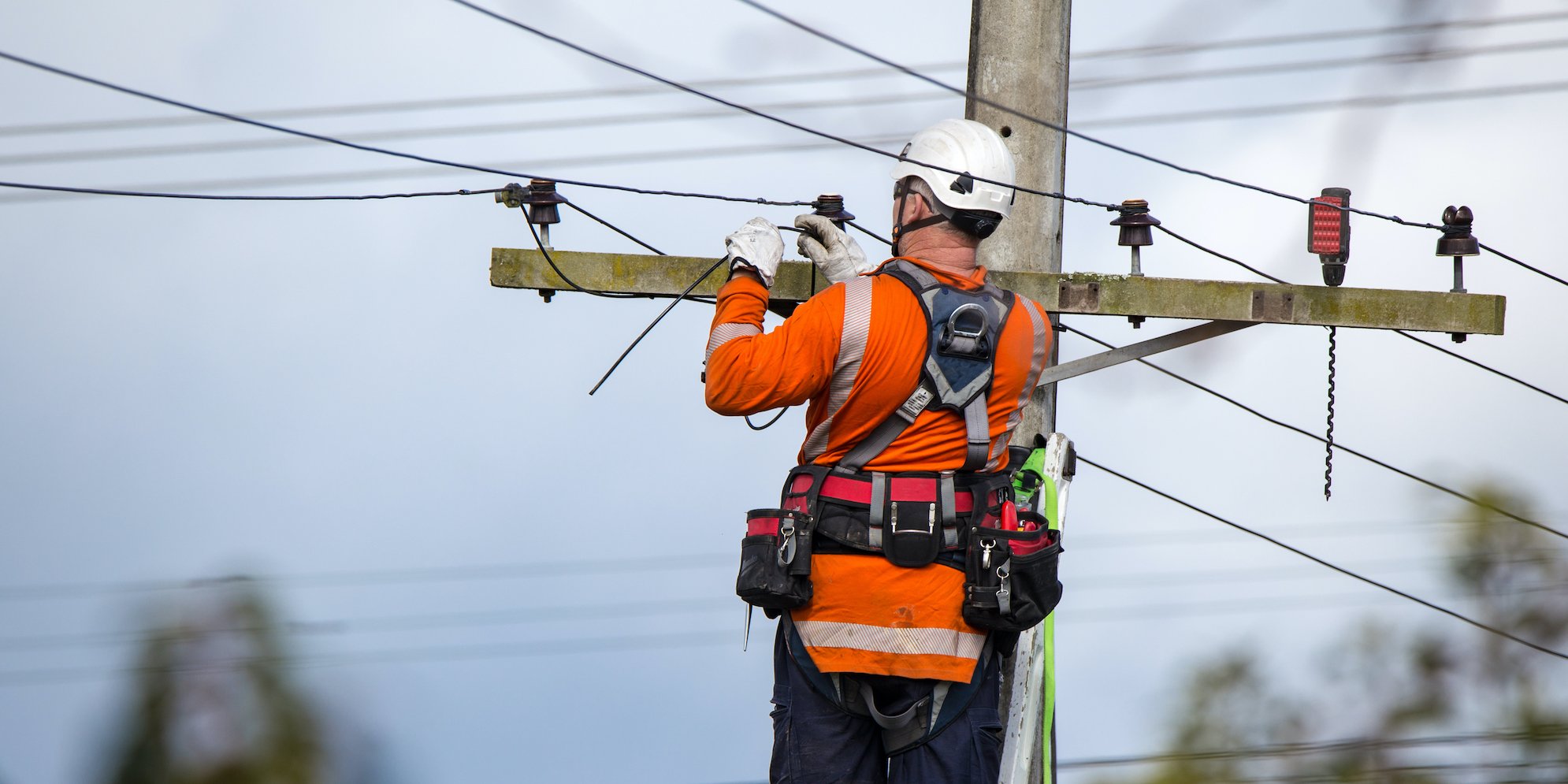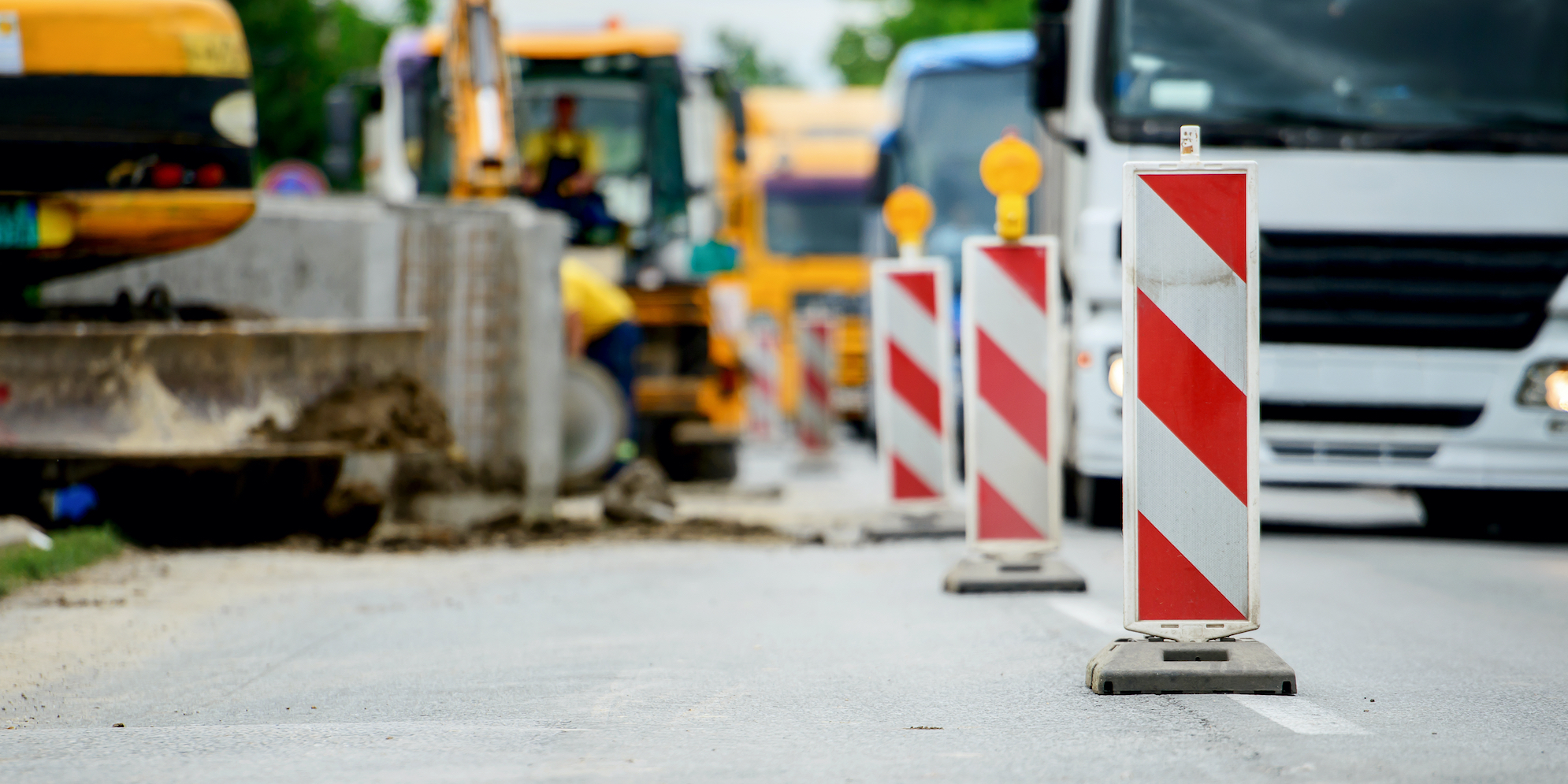Building and maintaining critical infrastructure can be hazardous in any setting, but this work is particularly dangerous when it happens near roadways and highways.
Tragically, an average of 124 workers die each year from injuries sustained in a highway work zone, according to the Bureau of Labor Statistics (BLS). Furthermore, transportation events composed 76 percent of roadway work zone fatal occupational injuries from 2011 to 2017. More than half—60 percent—occurred due to a worker being struck by a vehicle.
Extensive safety training is critical to protect workers from the safety threats associated with roadways and highways. Here, we discuss a few highway work zone safety topics leaders should cover again and again so workers are as safe as they can be when working alongside a road.
5 topics to cover in highway work zone safety training
1. Use of proper PPE
All workers within the right-of-way who are exposed to traffic or to work vehicles and construction equipment within the temporary traffic control (TTC) zone must wear high-visibility safety apparel that meets the Performance Class 2 or 3 requirements of the ANSI/ISEA 107-2004 publication titled “American National Standard for High-Visibility Safety Apparel and Headwear” or equivalent revisions, according to the Federal Highway Administration.
Different job functions require different types of work zone safety PPE, but acceptable apparel generally includes that with a vivid color contrast, high retroreflectivity, in good condition, and visible from 1,000 feet day or night, according to the American Traffic Safety Services Association. Workers also need to know when PPE should be replaced if it’s torn, dirty, defaced, or feels questionable.
Check out: 7 Deadly Utility Construction Hazards and How to Temper Them
2. Job-specific training
All workers must receive thorough training on how to work next to motor vehicle traffic in a manner that reduces their risk of experiencing a safety hazard, according to the Occupational Safety and Health Administration (OSHA). However, highway work zone safety can’t happen if everyone doesn’t know how to do their specific jobs.
Workers on site are not interchangeable between jobs because each position requires special training. Therefore, it’s important to ensure highway work zone safety training topics are tailored to fit each job type.
For example, flaggers need to know basic flagging procedures and crucial actions to take—and not to take—when in position, according to the National Safety Council (NSC). Additionally, work zone technicians must be adept on installing TTCs and general practices to keep everyone on site safe.
3. Adapting to different situations
In road construction, devices such as temporary traffic barriers, truck-mounted attenuators, and vehicle-arresting systems are often used to minimize the risk of a safety incident. However, sometimes use of these devices may not be possible—or the best option—so workers must have the training needed to identify safe alternatives.
This might involve actions like closing the highway work zone to all traffic or limiting the amount of vehicles that can pass through. Workers must have the ability to gauge the safety risk on the job site and respond accordingly.
Look: 4 Common Predictive Leading Indicators
4. Accountability and coordination
In a highway work zone, a big part of avoiding fatal injuries is ensuring the entire team is on the same page. When workers are accountable for their actions and coordinate their activities, it’s much easier to maintain a safe worksite.
Specifically, this includes not assigning collateral duties that keep safety personnel from focusing on their safety responsibilities, ensuring supervisors are held accountable for documenting hazards—and how they were mitigated—on a daily basis, and keeping the lines of communication open between everyone in the work zone, according to the National Institute for Occupational Safety and Health.
Related: Who is Responsible for Worker Safety?
5. Working in extreme temperatures
When you think about highway work zone safety, exposure to the elements might not be the first thing to come to mind, but it can be a serious issue. Utility work takes place rain or shine, so workers can experience extreme weather.
The definition of dangerous temperatures varies by location, but near-freezing temperatures are considered extreme cold in areas not used to winter weather, according to OSHA. Similarly, several factors play into heat exposure, including physical activity, air temperature, humidity, and sunlight, according to OSHA.
Therefore, workers need to know how to protect themselves in these situations. This includes having the ability to recognize the symptoms of common cold-induced illnesses—i.e., hypothermia, frostbite, trench foot—and heat-related illnesses—i.e., heat stroke, heat exhaustion, heat rash, and heat cramps.
Working in Heat: Heat Illness Prevention in Construction
6. Close call examples
Sometimes the best way to prevent serious injuries is for workers to hear stories of close calls experienced by their peers. If your team has these stories, share them promptly, but if you can, also highlight close calls incurred by workers at other companies.
For example, the Pennsylvania Department of Transportation has a page on its website that highlights close calls. One example includes an incident shared by an equipment operator of a time when a flagger stopped traffic, but an aggressive driver yelled at the worker and drove through the work zone. The flagger was able to radio the equipment operator, who successfully stopped traffic in the other direction, which allowed them to avoid a collision.
Providing workers with proper highway work zone safety training is essential to keep them safe. The last thing you want is for someone to experience a preventable injury on the job, so make this a top priority.
Up next: What is a Good Total Recordable Incident Rate?

